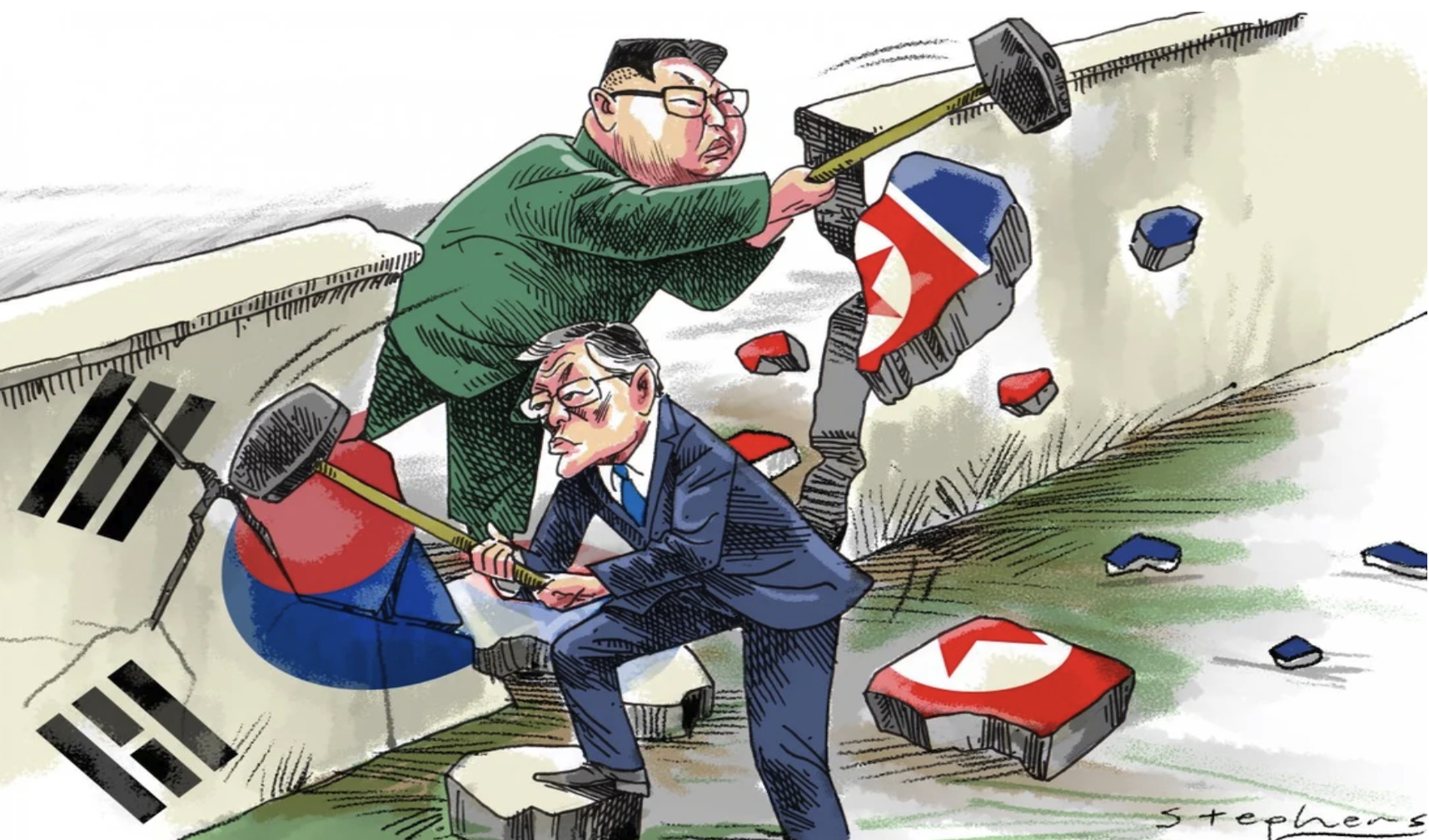TOM PLATE WRITES — Frustrations come with any occupation, and writing columns about Asia and America, as I have without stop for 25 years, is no exception. Asia is powerful and dynamic, and one size does not fit all. But, for me, no one subject has proven more elusive and more frustrating than the enduring topic of the two Koreas on their tensely divided peninsula.
Outsiders should venture an opinion about this elongated legacy of the Cold War only with deepest humility. My initial take on the divided peninsula back in the 1990s, in the Los Angeles Times, took the idealistic view that Koreans, north and south, could work out their own peace settlement if only those darn outsiders would just stay out of it.
The idea had appeal to many Koreans but scant international traction. Outside powers claimed to want to help fix the problem, but here we are. Almost 70 years after the Panmunjom armistice put the pistols back in the holsters, Koreans are no closer to reconciliation.
Perhaps the continuing divide of north and south is embedded in East Asian geopolitics. Buffer-lover China gets to claim it loves Koreans so much that good diplomatic relations with both sides are a must.
By contrast, the United States, self-designated global defender of freedom, notably lacks even a low-level official American mission up north. It subcontracts embassy business to harmless go-between Sweden.
Japan is anything but thrilled with Pyongyang’s nuclear arsenal, of course, but it cannot be but quietly delighted that its former colony remains cut down in size by its division.
In the south, below the demilitarized zone (DMZ) line that sliced Korea in half with all the tenderness of the cutting of a tree trunk, the US has yet another dug-in military settlement in Asia. It ostensibly serves solely to deter the Democratic People’s Republic of Korea, which at most has the population of Shanghai.
For its part, North Korea has a small but growing nuclear arsenal in existential fear of what the West – in particular the US – might do. Last week, it lit up the skies of the East Asia Sea and once again inflamed regional fears with rocket launches. Two splashed down in the Yellow Sea but made waves globally.
Earlier in my column’s evolution, I would liken the North’s periodic missile eruptions to the tantrums of a child in the corner playpen screaming for someone’s attention. Even today, this might have some validity.
International economic sanctions, which have been applied to North Korea almost continuously since its founding in 1948 – well before it went nuclear – are up for renewal at the United Nations at the autumn session of the General Assembly that brings national leaders together. The rockets’ red glare was Pyongyang’s primary aim.
International economic sanctions against any country do cause pain and are frequently the weapons of choice by the UN and major powers when they don’t know what else to do. The question is, who are they really hurting? In this instance, they certainly did not stop Pyongyang from going nuclear.
The truth is that sanctions are usually the mindless default option. Everyone knows that ruling elites manage to keep their caviar or kimchi supply line open no matter what; it is the general populace that mainly feels the pain.
South Korea is a wunderkind economically and technologically. While the North Korean economy gets ranked below even Palestine, the Republic of Korea is like some glittering Las Vegas.
By the indexing metric of gross domestic product, South Korea’s economy ranks in the world’s top dozen, ahead of even Russia. President Moon Jae-in’s administration in Seoul has pushed a pro-negotiation line with the North.
This approach would be called a “sunshine policy” in past administrations, especially that of Kim Dae-jung, who won a Nobel Peace Prize for his efforts. I always supported it, in fear of the obvious – the darkness of apocalypse.
But South Korean presidential terms are limited by the national constitution to one five-year term. France, by contrast, has evolved into a more sensible limit of two five-year terms.
By next year, it is possible that South Korea will revert to the risky and unimaginative Pyongyang hawk-hardline. Domestic politics as well as outside international influences nail the country’s north policy to a bed of bipolar inconsistency.
Concern is global. The Korean diaspora is well spread out, but in the US it is concentrated in New York and southern California, power centres in American politics. As much as Koreans complain about erratic US diplomacy, they know where they would have to turn in a true crisis.
As if to emphasise the connection, one of South Korea’s most prominent political figures – a minister in the current Moon cabinet – recently got the red-carpet treatment from the Rand Corporation. One of America’s most famous think tanks laid out for her a buffet of policy briefings by its razor-sharp experts.
Park Young-sun returned the favour with pointed insights about the two Koreas. Invited to sit in, I tried to keep a low profile – not my greatest talent. I was struck by her admission that her country’s rising material success has not lifted all Koreans and that Korea must count for something far more special than kimchi and K-pop.
Thoughtful visions from Koreans like her – north and south of the DMZ alike – is the best remedy for the perpetually tense Korean peninsula. It is by going deep within itself that Korea will find its way out. That is well beyond the ken of Beijing and Washington.
Tom Plate, Loyola Marymount University’s Distinguished Scholar of Asian and Pacific Studies, is also vice-president of the Pacific Century Institute, based in Los Angeles, and author of “Conversations with Ban Ki-moon” in the Giants of Asia book series.

